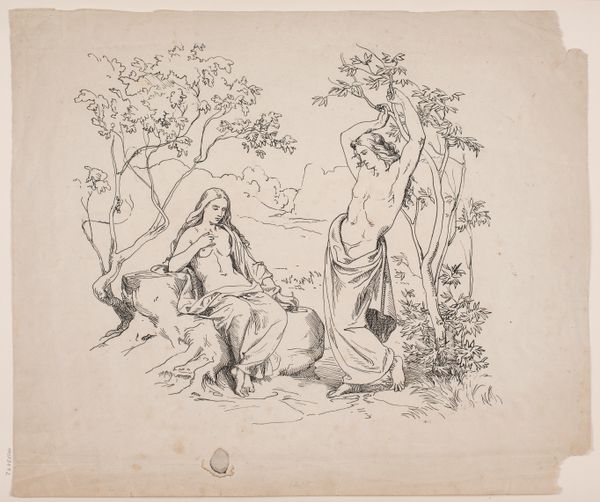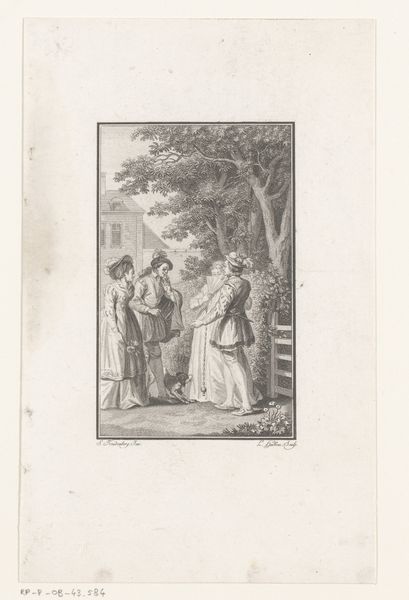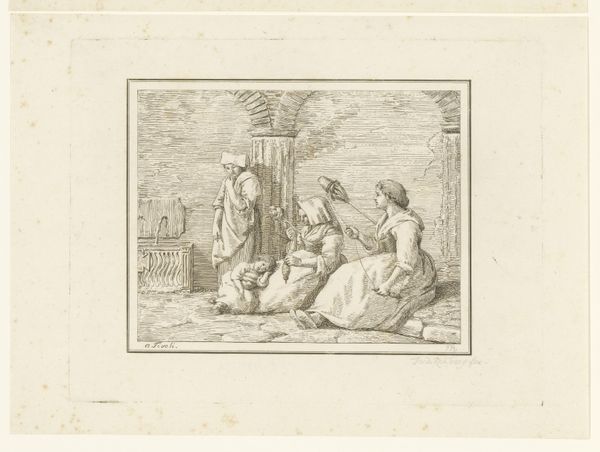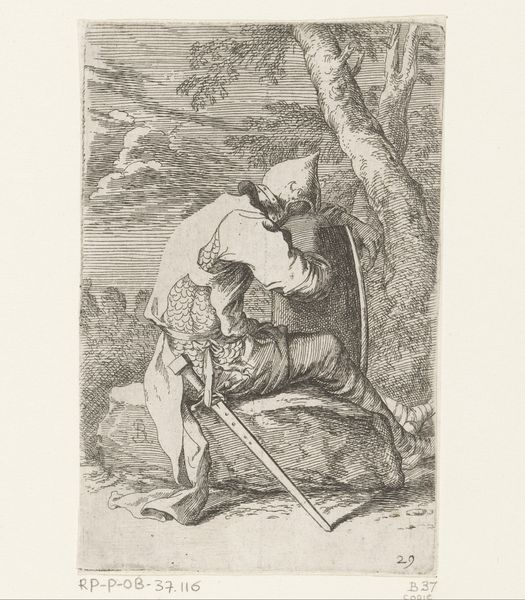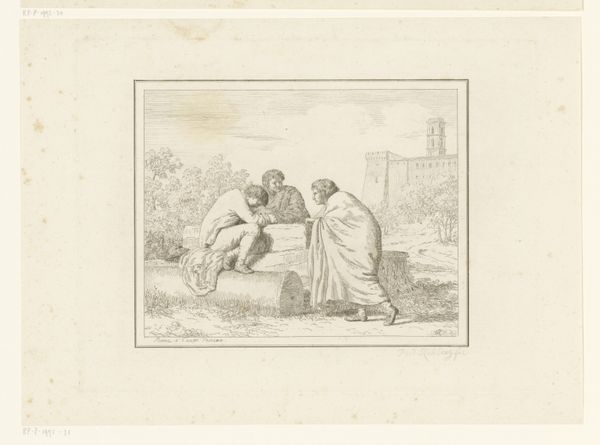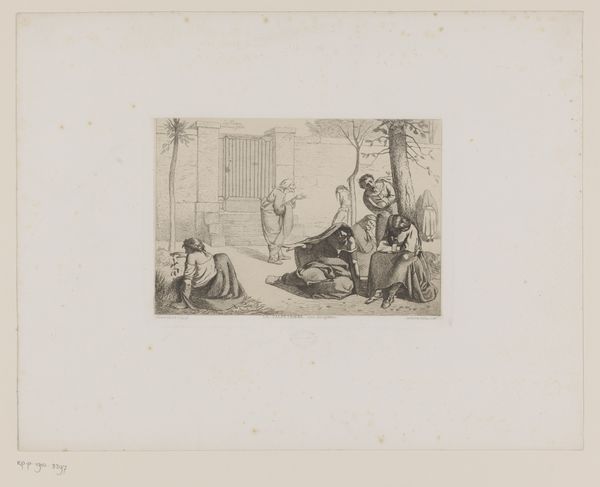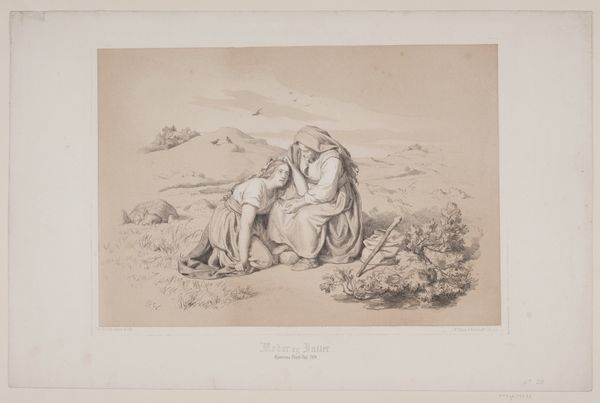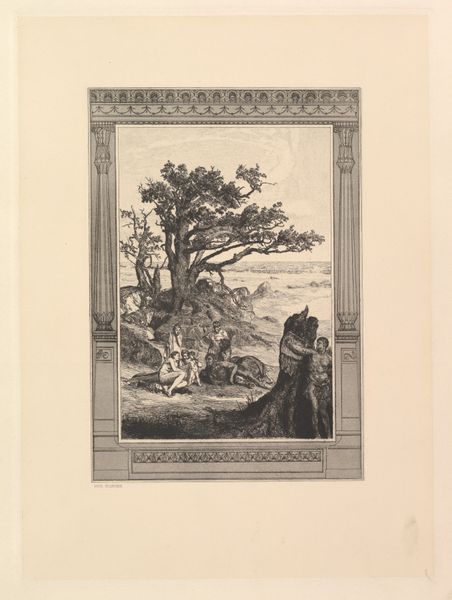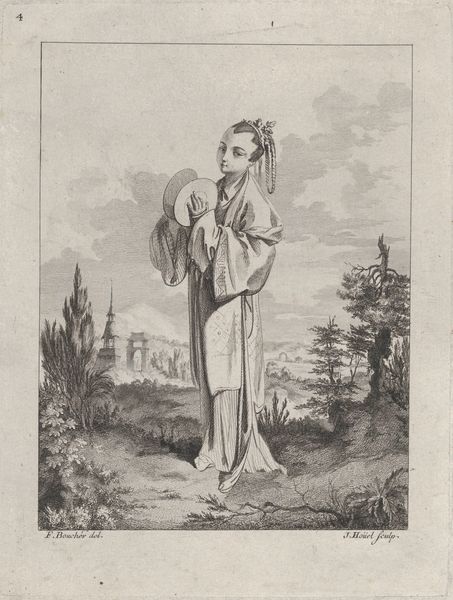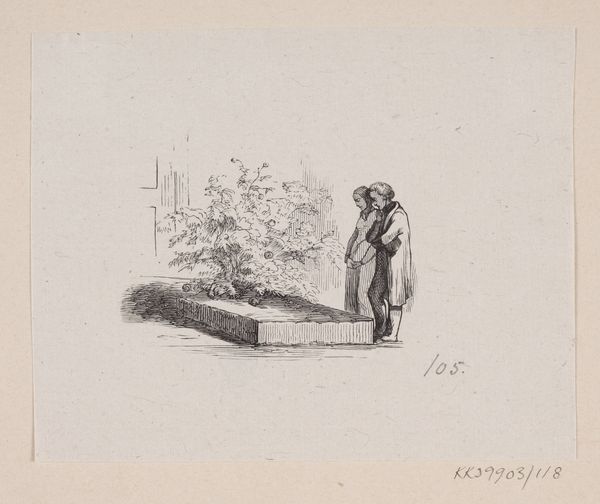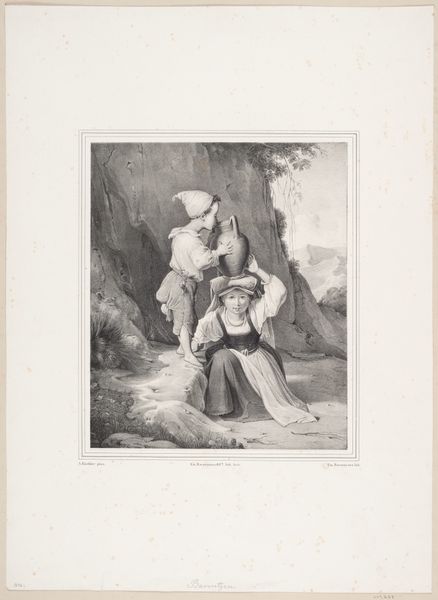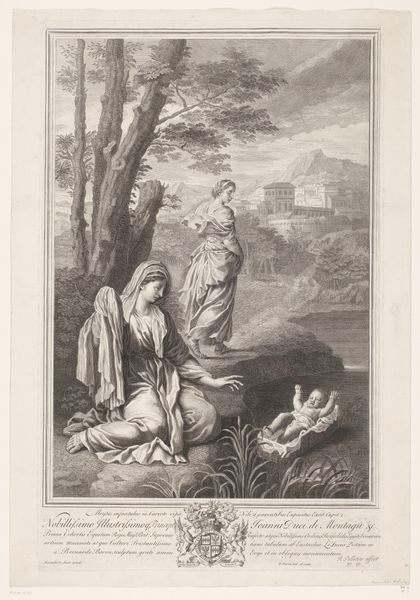
print, engraving
# print
#
landscape
#
figuration
#
romanticism
#
genre-painting
#
history-painting
#
engraving
#
realism
Dimensions: 114 mm (height) x 168 mm (width) (plademaal)
Editor: Here we have "An hermit preaches to a kneeling young girl," a print made between 1752 and 1833 by Meno Haas. It's an engraving depicting an outdoor scene. It strikes me as a rather formal composition for such an intimate moment. What symbols jump out at you? Curator: Well, consider first the posture of the figures. The girl's kneeling speaks of humility and supplication, common gestures within a religious context. Look at how her hands are clasped, mirroring the act of prayer. The hermit, seated, occupies a higher physical plane, embodying authority, literally elevated and literally speaking *down* to her, but notice, is he really? What does his open palm communicate to you? Editor: It seems like he is gesturing while explaining or perhaps… blessing her? Curator: Indeed. Note that even this relatively small work hints at grander theological frameworks. Think of the symbolism associated with light and darkness. The positioning of the hermitage – half illuminated, half shadowed – invokes an old, powerful symbol in religious works, as does its ruined state. And look behind the kneeling girl... Editor: I see! A small church on the hill with an open door! It almost seems as if the path is quite clear: forsake the earthly plane in search of some sort of spiritual meaning in the church atop the distant hill. Curator: Precisely. This contrast directs us towards considering the dialogue itself, what it might signify in a historical context. Genre paintings were popular, as were narratives about conversion and religious experiences. What values do you think such an image might have promoted in its time? Editor: It seems to advocate for piety, obedience and finding guidance within established religious frameworks? It feels like there are very few "clues" here, since there isn't room for individual interpretation when everything from gesture to the relative location of objects communicate something very clearly to the viewer. Curator: Your attention to detail is quite astute. These scenes often operate as moral allegories, encoding particular ideals and expectations. Observing them allows us to dissect these values, and their possible influence on culture and personal formation. Editor: It's fascinating how a seemingly simple image can contain so many layers of meaning and social commentary! Thank you for showing me how to 'decode' them.
Comments
No comments
Be the first to comment and join the conversation on the ultimate creative platform.
